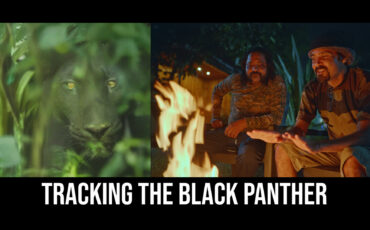Bhigwan – An Indian Wildlife Documentary Shot on LUMIX G9 II
BHIGWAN – A Tale of Wolves, Flamingos, and Village People is a wildlife documentary that I shot over the course of almost a year. It deals with a subject that is close to my heart: how can humans and nature coexist? Curious to hear more about my little passion project? Then read on …
Last year, I was in the beautiful area of Salzburg in the little town called Dienten for a summer holiday with my family. We were hiking across alpine pastures and sat down at a little alpine hut for a refreshing drink when we started a conversation with our host about wolves. Just recently, wolves had reappeared in this area and killed two of his sheep.
While I immediately expressed my fascination that wolves were coming back into our forests in beautiful Austria, the alpine hut owner got quite upset and pointed out that his sheep were incredibly frightened and therefore, these “problematic wolves” need to be shot down. He said, he has to deal with financial loss, and nobody needs wolves anyway.
The Wildlife Cinematography Course
That got me hooked.
I was thinking, in our rich and “advanced” society, have we lost our ability to deal with the positive fact that biodiversity seems to finally be increasing after many decades of so many species going extinct in Austria, and all over the world? Of course, we are talking about wild predators here. But is it still that same old attitude that we humans have the power to decide which animals and species are allowed in nature?
So, I was discussing this subject with my dear friend Parag Aklujkar, an Indian wildlife photographer who is very well-connected within the Indian wildlife photography community. He did some research, and we settled on doing a documentary on the “Indian way” of coexistence to get a new perspective on this topic.
Eventually, we chose the area around Bhigwan, which is located around 100 kilometers from Pune, India. It is an interesting place, particularly because the remarkable ecosystem that emerged here was an unintended consequence of a dam built years ago to secure water supplies for major Indian cities. Hence, it has also become a place where nature and wild predators have re-emerged.
The area around Bhigwan is home to wetlands and grasslands, offering a real chance to spot wild wolves. There are only about 3,000 of them left in India—fewer even than the Bengal tiger, which gets all the attention of conservation efforts. But that was not enough for me, as I was eager to get the viewpoint of as many involved parties as possible. I wanted to hear from shepherds, farmers, and homestay owners hosting tourists to hear what they think about coexisting with wild predators.
And what they told me was humbling. Considered a “rich” European in Indian terms, my perspective shifted dramatically when I encountered the challenges faced by Indian shepherds. Yes, while I was aware of the occasional wild wolf attack on their goats, the shepherds’ responses to these threats were truly astonishing.
The same was true for village people, nurturing their little farmlands.
There are no fences around their properties, so goats, sheep, and water buffalo are openly exposed. They mentioned that “wolves are our friends—when their feet touch our land, it is a blessing for us.”
In European terms, these people are very poor. Nevertheless, they view themselves, wolves, and other wild predators as integral parts of the larger picture and not as separate elements.
I think we can all learn from them. Their example is very inspiring to me, and I hope that some European politicians and farmers can also start seeing it in a similar way.
Last but not least, the wetlands around Bhigwan are a haven for bird enthusiasts, and even flamingos have become resident birds here. Officially, this area is not protected because of the commercial interests that led to the construction of the dam.
And again, to my surprise, local villagers have understood that this area needs to be protected and formed a group called “Agnipankh”—meaning “wings of fire.” They understand that ecotourism can become a great source of income.
A big “thank you” goes to Panasonic for lending me a LUMIX G9 II, the LUMIX 12-35mm F2.8, and LEICA 100-400mm F5.0 – 6.3 lenses with a 2x teleconverter, which I used along with my own LUMIX S1 and a Canon EF 100-400mm F4.5-5.6.
The experience of using this minimalistic setup is discussed in an interview with Johnnie in a separate post, here.
Let me know what you think of this little passion project of mine. I am happy to discuss this in the comments section below.




































